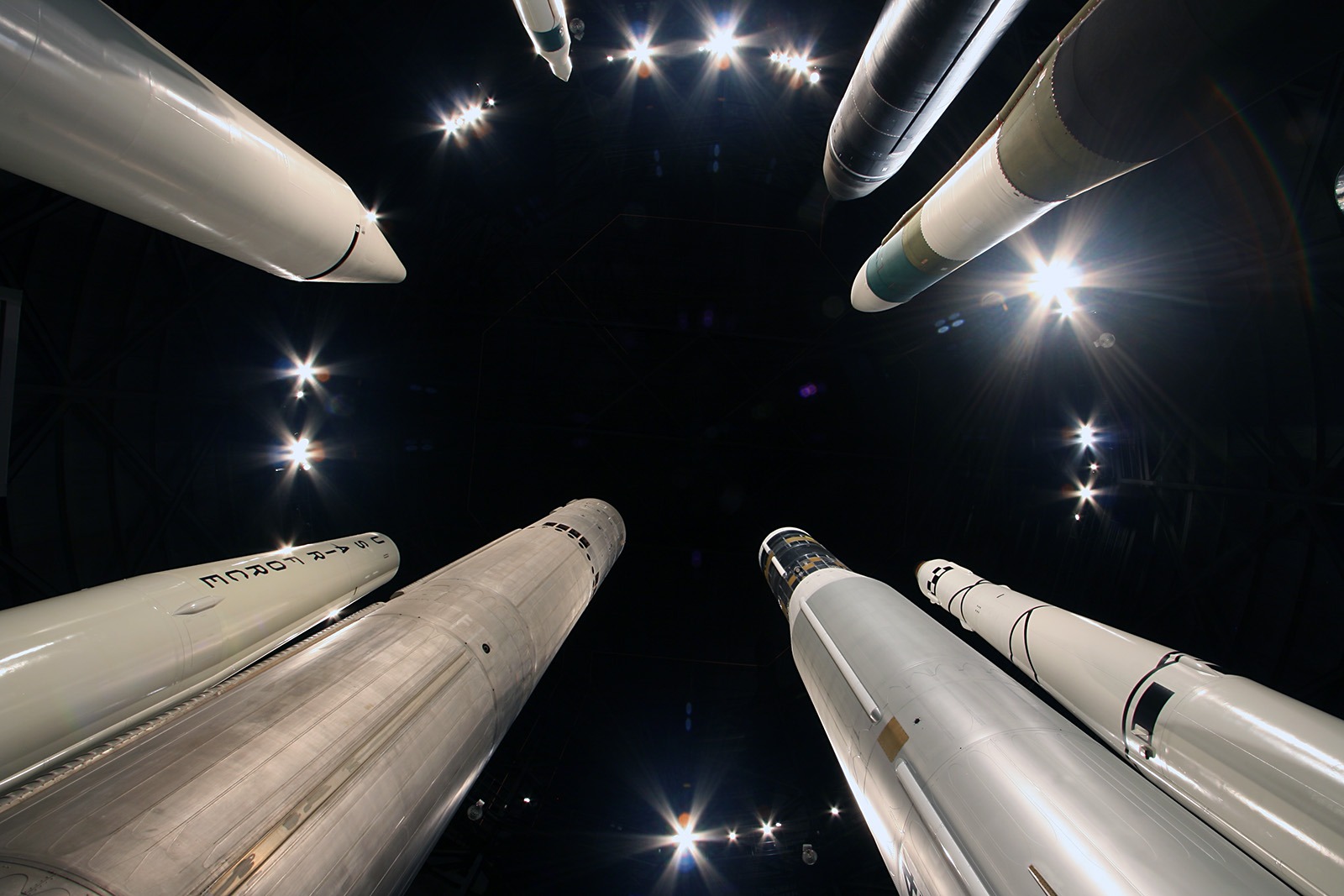Contesting the Illusion of Peace: Are we prepared for nuclear war?
The nuclear armed states have created an ‘illusion of peace’ around nuclear weapons that contributes to the perception that nuclear weapons are not an immediate threat. At the 26th UN Climate Change Conference (COP26) in Glasgow last month, leaders from many of these states made pledges toward combatting the alarming climate crisis and to save the planet, even as they retain ‘the most destructive’ weapon on earth. While governments continue to finance weapons modernisation programs through public funds, and national leaders continue to employ direct and indirect nuclear threats against their rivals and adversaries, there is a remarkable absence of conversation on civil defence mechanisms and preparing citizens for the actual consequences of nuclear attacks. This commentary expresses concern at the apathy among the political leaderships and publics from the nuclear-armed states toward the fundamental question of being prepared for a nuclear catastrophe.
Understanding Political and Public Apathy
Approximately 7.75 billion people still live in the presence of 13,150 nuclear weapons possessed by the nine nuclear-armed states. Despite their destructive power, the threat from nuclear weapons appears quite distant to the everyday life of ordinary citizens living in the nuclear-armed states. The apathy toward being ‘prepared for a nuclear catastrophe’ could be explored through several explanations.
Since their first use in 1945, a strong prohibitory norm or the ‘nuclear taboo’ has prevailed vis-à-vis nuclear weapons, bolstered by the belief that a neat balance of terror prevents the actual use of the nuclear weapons (the logic of mutual nuclear deterrence). This logic has managed to convince political leaders of the nuclear-armed states that the absence of a nuclear war can be justified as the preservation of world peace. Unlike at the peak of the Cold War when the possibility of a ‘nuclear attack’ was not unimaginable to citizens living in the United States, Europe and the Soviet Union, the danger of a nuclear war receded to the background with the culmination of the US-Soviet rivalry. In the decades following the end of Cold War, even though the number of states with nuclear weapons increased to nine. the menaces of terrorism, extremism, insurgencies, cross border conflicts, discrimination, hunger, poverty and climate change became vastly more significant as immediate threats.
At the highest echelon of global decision-making – the United Nations Security Council (UNSC) – the five Nuclear Weapons States have continued to aver that their possession of nuclear weapons is fundamental to the preservation of their national and international security. For instance, the United Kingdom’s (UK) 2021 nuclear deterrence policy primer argues that, “A world where the UK’s potential adversaries have nuclear weapons but the UK (and NATO) does not, is not a world in which you and your family are safer.” The P5 have thus subsumed the international peace discourse within the international security discourse vis-à-vis their nuclear-weapons status at the UNSC.
Unfortunately, leaders of nuclear armed states are not urgently concerned with the long-lasting humanitarian and environmental impacts and after-effects of a nuclear disaster. The idea of international ‘peace’ that we live with is the ‘hope’ that these extraordinary lethal weapons will never be used, that nuclear deterrence will work, that nuclear restraint will be the obvious rational choice of leaders, and that one day there will be political and security breakthroughs that would encourage states to completely give up these weapons. This spectacular illusion of peace was displayed by the the nuclear armed countries in their refusal to participate in the 2017 Treaty on Prohibition of Nuclear Weapons (TPNW). This illusion of peace, however, needs to be countered by asking governments how prepared they are to deal with actual impacts and consequences of nuclear weapons-related disasters.
Challenging the Illusion of Peace
Nuclear weapons remain relevant in the political discourses of states that possess them. The contemporary global nuclear order is vastly more complex with relatively weaker nuclear actors, like North Korea, also shaping the rules of nuclear engagement. Of the 13,150 nuclear warheads in the world, an estimated 2,000 warheads (belonging to the US, Russia, UK and France) are still in a ready to launch mode. The risks and dangers associated with nuclear weapons use have been exacerbated by deepening political rivalries, renewed arms races, and breakdown of older arms control agreements. The possibility of new nuclear actors emerging in the future, including Japan and South Korea, raises serious concerns for an already weakened nuclear non-proliferation regime. The development of new and more lethal disruptive technologies, including in cyber and space domains, have introduced new forms of escalation and nuclear command and control challenges. Moreover, the risks of a nuclear catastrophe no longer emerge only from the political rivalries between states, but also from their potential acquisition by non-state actors, specifically terrorist organisations.
Nuclear threats and vulnerabilities are further exacerbated in the age of a global pandemics and rapid climate change. Healthcare systems and services even in the most advanced cities of the world are not equipped to respond to sudden disasters and mass casualty management, as was revealed in the Covid-19 pandemic. The recent COP26 summit also reveals the limitations and inadequacies of governments and international organisations to tackle and contain a global climate crisis. This should serve as a wake-up call to states for greater cooperation to prevent and mitigate future disasters, that includes pandemics, climate change, and nuclear catastrophes.
How Prepared Are We?
As geo-political tensions rise and states acquire modern military capabilities that accelerate, amplify and intensify the destructive capacity of nuclear weapons, it is important that political leaders and publics seriously consider the impacts of nuclear use. There is a general lack of awareness and public education on basic disaster management training. A nuclear attack or accident is much more than just detonation. The blast wave, thermal wave, radiation and radioactive fallout from a nuclear disaster have lasting consequences on human bodies. Formidable research and modelling techniques have demonstrated the adverse socio-ecological impacts, including atmospheric effects, famines, food shortages, of even small nuclear disasters in modern cities. People living in the proximity of nuclear infrastructure live under the perpetual threat of radioactive exposure and contamination in case of accidents or disasters. Communities in Japan, Marshall Islands, French Polynesia, Hawaii and many other former ‘testing sites’ continue to grapple with the consequences of radioactive fallouts from the nuclear tests conducted by the nuclear weapons states.
The decimation of ordinary life and the creation of tremendous psychological fear lies at the heart of deterrence doctrines which drive nuclear weapons programs. Urban population centres of the world are likely to be prime targets of a nuclear attack. Most modern cities are not equipped with civil defence measures like fallout shelters, safety drills or siren warning systems.
Concrete actions and collective steps are required from governments for limiting the risks from nuclear disasters and mitigating the fallouts of a nuclear explosion. Governments should better prepare their citizens toward disaster management through civic defence measures and dissemination of credible information. The safety and security of nuclear infrastructure, located in proximity of human inhabitation should be the top-most priority in the long-term strategies for disaster management. The idea of bringing back civil defence in the context of nuclear weapons is not meant to undermine the disarmament discourse. On the contrary, the realisation that nuclear disaster management is a daunting challenge and that states can never be prepared enough for the devastating and multigenerational effects of nuclear disasters, should give greater momentum to the efforts toward nuclear disarmament.
About the Author
Tanvi Kulkarni is a Policy Fellow at APLN. She is also a Visiting Fellow at the Institute of Peace and Conflict Studies, New Delhi and visiting lecturer at the Department of Defence and Strategic Studies at the Savitribai Phule Pune University..
Disclaimer: The opinions articulated above represent the views of the author(s) and do not necessarily reflect the position of the Asia Pacific Leadership Network or any of its members. The APLN’s website is a source of authoritative research and analysis and serves as a platform for debate and discussion among our senior network members, experts and practitioners, as well as the next generation of policymakers, analysts and advocates. Comments and responses can be emailed to apln@apln.network.
Image: iStock,KishoreJ.




![[WMD] Nuclear-Capable Missiles](https://cms.apln.network/wp-content/uploads/2021/12/KakaoTalk_Photo_2021-12-14-09-30-15-001.jpeg)